Managing natural resources often involves complex financial transactions, and recovering payments can be a significant challenge for companies in this sector. Effective management of these challenges is crucial for maintaining profitability and sustainability. This article delves into the intricacies of the payment recovery process in natural resource management, exploring various phases of recovery, assessing the viability of payment recovery, understanding the financial implications of legal actions, and discussing strategic debt collection techniques and collection rates. By examining these key areas, companies can better navigate the hurdles associated with payment recovery and make informed decisions that align with their financial and operational goals.
Key Takeaways
- The payment recovery process in natural resource management is typically divided into three phases, with escalating actions from initial contact to potential litigation.
- Assessing the debtor’s assets and jurisdiction is essential to determine the likelihood of successful payment recovery and to decide whether to pursue litigation or close the case.
- Legal actions in debt recovery involve upfront costs, and companies must weigh these against the potential benefits of litigation to make cost-effective decisions.
- Strategic debt collection techniques, such as leveraging communication channels and skip-tracing, play a critical role in the resolution of debts.
- Collection rates vary based on claim volume, account age, and amount, with competitive rates offered to incentivize higher claim submissions and facilitate client decisions.
Understanding the Payment Recovery Process in Resource Management
Phase One: Initial Contact and Information Gathering
The journey to recover payments begins swiftly. Within 24 hours of account placement, a multi-pronged approach is initiated. Debtors receive the first of four letters, while skip-tracing and investigations kick off to unearth the best financial and contact information.
- Daily attempts to contact the debtor are made, utilizing phone calls, emails, text messages, and faxes.
- The goal is to achieve a resolution within the first 30 to 60 days.
Persistence is key. Our team’s relentless pursuit during this phase is designed to lay the groundwork for successful recovery or escalation.
Should these efforts not yield results, the process seamlessly transitions to Phase Two, where legal expertise comes into play. It’s a structured yet flexible approach, ensuring every avenue is explored before escalating the matter.
Phase Two: Escalation to Legal Representation
When initial recovery efforts falter, the escalation to legal representation marks a critical juncture. The debtor is now faced with formal legal demands, a step that underscores the seriousness of the situation. Upon transfer to our affiliated attorneys, the following actions are initiated:
- A series of stern letters from the attorney’s office, asserting the legal obligation to settle the debt.
- Persistent attempts to contact the debtor through calls and correspondence, aiming for a swift resolution.
The transition to legal intervention is designed to prompt immediate action from the debtor, leveraging the authority of legal representation to secure payment.
Should these efforts remain unfruitful, the path leads to a decisive crossroads: either proceed with litigation or consider alternative recovery strategies. The choice hinges on a structured recovery system, tailored to the complexities of contracts in areas like green building projects and climate change consultation.
Phase Three: Litigation and Case Closure Recommendations
At the crossroads of Phase Three, a critical decision awaits. The path chosen will significantly impact the recovery outcome. Two distinct recommendations emerge from our comprehensive analysis:
- Closure of the case, advised when recovery appears unlikely. This option incurs no fees, ensuring a risk-free conclusion.
- Litigation, a route demanding careful consideration. Should you opt out, standard collection efforts persist without cost. If litigation is pursued, upfront legal costs apply, typically between $600 to $700.
The choice is yours, but the implications are clear: proceed with caution, and understand the financial commitments involved.
Our tailored collection rates reflect the complexity of the recovery system, with percentages scaling based on claim volume and account age. Here’s a snapshot:
| Claims Submitted | Account Age | Collection Rate |
|---|---|---|
| 1-9 | < 1 year | 30% |
| 1-9 | > 1 year | 40% |
| 10+ | < 1 year | 27% |
| 10+ | > 1 year | 35% |
These rates are competitive, designed to align with the nuanced challenges of debt recovery.
Assessing the Viability of Payment Recovery
Investigating Debtor’s Assets and Recovery Likelihood
The initial phase of debt recovery hinges on a meticulous investigation of the debtor’s assets. This crucial step determines the feasibility of recovery and informs the subsequent course of action. A debtor’s financial landscape is mapped, assessing the presence of tangible assets, account holdings, and overall solvency.
The outcome of this investigation not only influences the decision to pursue litigation but also shapes the strategy for recovery efforts.
Understanding the debtor’s asset profile is essential. It allows for a tailored approach to recovery, factoring in the likelihood of successful collection. The process involves:
- Reviewing financial statements and credit reports
- Conducting property searches
- Analyzing business operations and revenue streams
The findings provide a foundation for making informed decisions, balancing the potential for financial restitution against the costs of legal action. It’s a delicate equilibrium, where the challenges of debt collection intersect with regulatory compliance and the imperative of sustainability.
Determining the Course of Action: Closure or Litigation
When the recovery likelihood is low, closure is the prudent path, sparing clients from unnecessary expenses. Bold decisions must be made when litigation is on the table. Upfront legal costs, which typically range from $600 to $700, must be weighed against the potential for successful debt recovery.
The choice between litigation and closure is pivotal, impacting both financial outcomes and client relations.
The decision matrix is clear: if recovery seems improbable, we recommend closure. If litigation is advised, clients face a critical choice. They can either proceed with legal action, incurring upfront costs, or opt for standard collection activities. The latter includes persistent attempts to resolve the debt through calls, emails, and faxes.
Our competitive collection rates are tailored to claim volume and account specifics. Here’s a quick breakdown:
- Accounts under 1 year: 30% (1-9 claims) or 27% (10+ claims)
- Accounts over 1 year: 40% (1-9 claims) or 35% (10+ claims)
- Accounts under $1000: 50% regardless of claim count
- Accounts requiring legal action: 50% upon collection
The Impact of Debtor’s Jurisdiction on Legal Proceedings
The debtor’s jurisdiction plays a pivotal role in the recovery process. Jurisdictional variances can significantly affect the strategy and potential success of debt recovery efforts. Legal frameworks and enforcement mechanisms differ, often dictating the feasibility and cost of litigation.
The choice of legal action is influenced by the debtor’s location, with upfront costs ranging from $600 to $700. These costs are a critical consideration for creditors.
Understanding the debtor’s jurisdiction is crucial for setting realistic expectations about the recovery process. Tiered recovery rates incentivize swift action, with rates adjusted based on claim volume and account specifics. Here’s a snapshot of how rates vary:
- For 1-9 claims, rates range from 30% to 50% of the amount collected.
- For 10 or more claims, rates decrease, reflecting the value of bulk processing.
In essence, the debtor’s jurisdiction can either streamline or complicate the recovery journey. It’s essential to navigate these waters with a clear understanding of the associated legal obligations, costs, and recommendations for handling non-payment effectively.
Financial Implications of Legal Actions in Debt Recovery
Understanding Upfront Legal Costs and Fees
Entering the legal arena to recover debts in resource management means being prepared for initial expenses. Legal action requires upfront costs of $600-$700, typically covering court costs and filing fees. These fees can fluctuate based on the debtor’s jurisdiction, impacting the overall cost of litigation.
Collection rates vary, and they are often structured to reflect the volume and age of claims. For instance, lower rates may apply to a higher number of claims or newer accounts, while higher percentages are charged for older or smaller-value accounts.
Should litigation efforts not yield the desired results, the financial burden is mitigated. Failed litigation results in no payment obligation, providing a safety net for creditors.
Understanding these costs is crucial for making informed decisions about pursuing legal action. It’s a balance of risk and potential reward, with a clear exit strategy if recovery systems for non-payment prove unsuccessful.
Evaluating the Cost-Benefit of Pursuing Litigation
When considering litigation, the primary focus is on the balance between potential recovery and the expenses involved. Deciding whether to litigate involves a careful assessment of the debtor’s assets and the likelihood of successful debt recovery. Upfront legal costs, typically ranging from $600 to $700, can be a significant factor in this decision.
Strategic communication and thorough investigation are essential in determining the feasibility of litigation. If the probability of recovery is low, alternative methods of debt collection should be considered to avoid unnecessary legal expenses.
- Upfront Costs: Court costs, filing fees, etc.
- Recovery Likelihood: Assessment of debtor’s assets.
- Alternatives: Standard collection activities (calls, emails, faxes).
In the event of unsuccessful litigation, the case will be closed with no additional fees owed to the firm or affiliated attorney. This ensures that clients are not further burdened by failed legal attempts.
What Happens if Litigation Attempts Fail?
When litigation does not yield the desired outcome, the path forward hinges on pragmatic decision-making. Closure of the case may be the most sensible route, sparing further financial drain. At this juncture, clients face a crossroads:
- Option 1: Withdraw the claim, incurring no additional costs from the firm or affiliated attorney.
- Option 2: Continue standard collection efforts, such as calls and emails, in pursuit of the debt.
The choice should balance the likelihood of recovery against the costs already incurred and the potential for additional expenses.
If the decision is to cease legal action, the financial implications are clear. No further legal fees will be accrued, and the focus can shift to alternative recovery strategies. These may include negotiation, payment plans, or engaging debt collection agencies. The goal remains steadfast: to recover the debt through the most effective means available.
Strategic Debt Collection Techniques
Leveraging Communication Channels for Debt Resolution
Effective debt resolution hinges on the strategic use of communication channels. Clear terms and conditions are the bedrock of successful collections, ensuring all parties understand their obligations. Utilizing a mix of phone calls, emails, text messages, and faxes can significantly increase contact rates with debtors.
Technology plays a pivotal role in enhancing these efforts. Automated systems can send reminders and escalate communications as needed, maintaining persistent contact without overburdening collection staff. This approach not only improves efficiency but also minimizes disputes, especially in international environmental services.
The key to maximizing recovery efforts lies in the persistent and strategic deployment of communication tools.
Here’s a snapshot of the communication strategy in action:
- Initial contact made within 24 hours of account placement.
- Daily attempts to reach debtors for the first 30 to 60 days.
- Escalation to legal representation if initial efforts fail.
By leveraging these channels, debt recovery becomes a more streamlined and effective process.
The Role of Skip-Tracing in Locating Debtors
Skip-tracing is a pivotal tool in the debt recovery process, enabling firms to track down elusive debtors. The accuracy of information gathered through skip-tracing can significantly influence the success of subsequent collection efforts. By leveraging public records, databases, and credit reports, collection agencies can uncover current addresses, phone numbers, and even employment details.
Persistence is key when utilizing skip-tracing techniques. A systematic approach often includes:
- Reviewing credit applications and previous correspondence
- Analyzing utility records and other public documents
- Engaging with professional skip-tracers for complex cases
The goal is to establish contact and negotiate a resolution before legal actions become necessary.
When standard communication fails, skip-tracing becomes the backbone of the recovery strategy. It’s not just about finding people; it’s about piecing together a debtor’s financial puzzle to facilitate effective recovery.
The Importance of Persistent Contact in Debt Collection
Persistent contact is the backbone of successful debt recovery. Consistent communication serves as a reminder to debtors of their obligations and underscores the seriousness of their situation. By maintaining regular contact, collection agencies can keep the pressure on, which often leads to more favorable outcomes.
Persistence in debt collection is not just about frequency, but also about the quality of interactions. Tailoring the approach to the debtor’s circumstances can make all the difference. Here’s a simple strategy:
- Understand the debtor’s situation
- Customize communication methods
- Maintain a professional tone
- Keep detailed records of all interactions
The goal is to create a sense of urgency without crossing the line into harassment. A balanced approach respects the debtor’s rights while effectively moving towards resolution.
Debt collection agencies play a vital role in environmental debt recovery by utilizing technology, collaboration with organizations, and sustainable practices to locate debtors and ensure compliance with regulations. The right strategy combines persistence with respect, leading to successful debt recovery without compromising ethical standards.
Navigating Collection Rates and Client Decisions
Competitive Collection Rates Based on Claim Volume
In the intricate dance of natural resource management, collection rates play a pivotal role. Bulk submissions can significantly reduce costs, offering a sliding scale of rates that reward higher claim volumes. For instance, smaller accounts, particularly those under $1000 or involving legal intervention, typically see rates between 30% to 50%. However, when 10 or more claims are submitted, the rates become more advantageous.
| Claims Submitted | Accounts < 1 Year | Accounts > 1 Year | Accounts < $1000 | With Attorney |
|---|---|---|---|---|
| 1-9 | 30% | 40% | 50% | 50% |
| 10+ | 27% | 35% | 40% | 50% |
The strategy is clear: consolidate your claims to capitalize on competitive rates. This approach not only streamlines the recovery process but also maximizes the financial return on each claim.
Remember, the age and size of the account, as well as the necessity for legal intervention, are key factors that influence the final rate. It’s a balancing act between the potential recovery and the cost of collection – one that requires careful consideration and strategic decision-making.
Differentiating Rates by Account Age and Amount
The complexity of debt recovery often correlates with the age of the account and the amount owed. Older accounts typically require more intensive efforts to collect, justifying higher collection rates. Conversely, newer debts might be resolved with less intervention, allowing for more favorable rates.
| Account Age | Amount Owed | Collection Rate |
|---|---|---|
| < 1 year | <$1000 | 40% |
| < 1 year | >$1000 | 27% |
| > 1 year | <$1000 | 50% |
| > 1 year | >$1000 | 35% |
The tiered approach to collection rates ensures that clients only pay for the level of service necessary to recover their funds. This strategy not only maximizes recovery potential but also aligns the cost with the difficulty of the collection process.
It’s crucial for clients to understand that the amount recoverable can influence the decision to pursue litigation or closure. A debt’s value and its recovery probability are pivotal in determining the most cost-effective course of action.
Client Options in the Event of Unsuccessful Collection
When efforts to collect a debt reach an impasse, clients are faced with critical decisions. Regular client communication is key to maintaining momentum and exploring alternative strategies. If litigation is deemed unviable, clients may opt to close the case, incurring no further costs from our firm or affiliated attorneys.
In cases where recovery systems for non-payment in green projects or late payments in contracts fail, clients can choose to continue standard collection activities, such as calls and emails, at no additional charge. This persistence often pays off, as debtors may eventually settle to avoid ongoing contact.
Clients should carefully weigh the financial implications of continued collection efforts against the likelihood of recovery.
The table below outlines the competitive collection rates offered, based on claim volume and account specifics:
| Claims Submitted | Account Age | Collection Rate |
|---|---|---|
| 1-9 | Under 1 yr | 30% |
| 1-9 | Over 1 yr | 40% |
| 1-9 | Under $1000 | 50% |
| 10+ | Under 1 yr | 27% |
| 10+ | Over 1 yr | 35% |
| 10+ | Under $1000 | 40% |
Clients are encouraged to review these options and select the path that aligns with their financial goals and the specifics of their case.
Understanding the intricacies of collection rates and making informed client decisions is crucial for maintaining a healthy financial ecosystem for your business. At Debt Collectors International, we specialize in providing tailored debt collection solutions that cater to the unique needs of various industries. Whether you’re dealing with disputed claims, skip tracing, or judgment enforcement, our expert team is equipped to handle your cases with precision and care. Don’t let overdue accounts disrupt your business operations. Visit our website to learn more about our services and take the first step towards optimizing your collections process.
Frequently Asked Questions
What happens during Phase One of the payment recovery process?
Within 24 hours of placing an account, several actions are initiated: a series of four letters are sent to the debtor, the case is skip-traced for financial and contact information, and our collector attempts to contact the debtor through various communication methods. Daily contact attempts continue for the first 30 to 60 days, after which, if unresolved, the case moves to Phase Two.
What occurs if my case escalates to Phase Two?
The case is forwarded to a local attorney within our network who sends a series of letters on their law firm letterhead and attempts to contact the debtor by phone. If these attempts do not lead to a resolution, we provide a recommendation for the next step.
What are the possible recommendations at the end of Phase Three?
Our recommendation will be either to close the case if recovery is unlikely, or to proceed with litigation. If litigation is recommended, you have the option to proceed with legal action or continue standard collection activity without additional cost.
What upfront legal costs can I expect if I decide to litigate?
If you choose to litigate, you will need to cover upfront legal costs such as court costs and filing fees, typically ranging from $600 to $700. These are required before a lawsuit is filed on your behalf.
What happens if litigation attempts are unsuccessful?
If litigation fails to recover the owed amount, the case will be closed, and you will owe nothing to our firm or our affiliated attorney.
How are collection rates determined?
Collection rates are competitive and depend on the number of claims, the age of the accounts, and the amount collected. Rates vary, with a higher percentage for older accounts or those under $1000.00, and a consistent 50% for accounts placed with an attorney.





